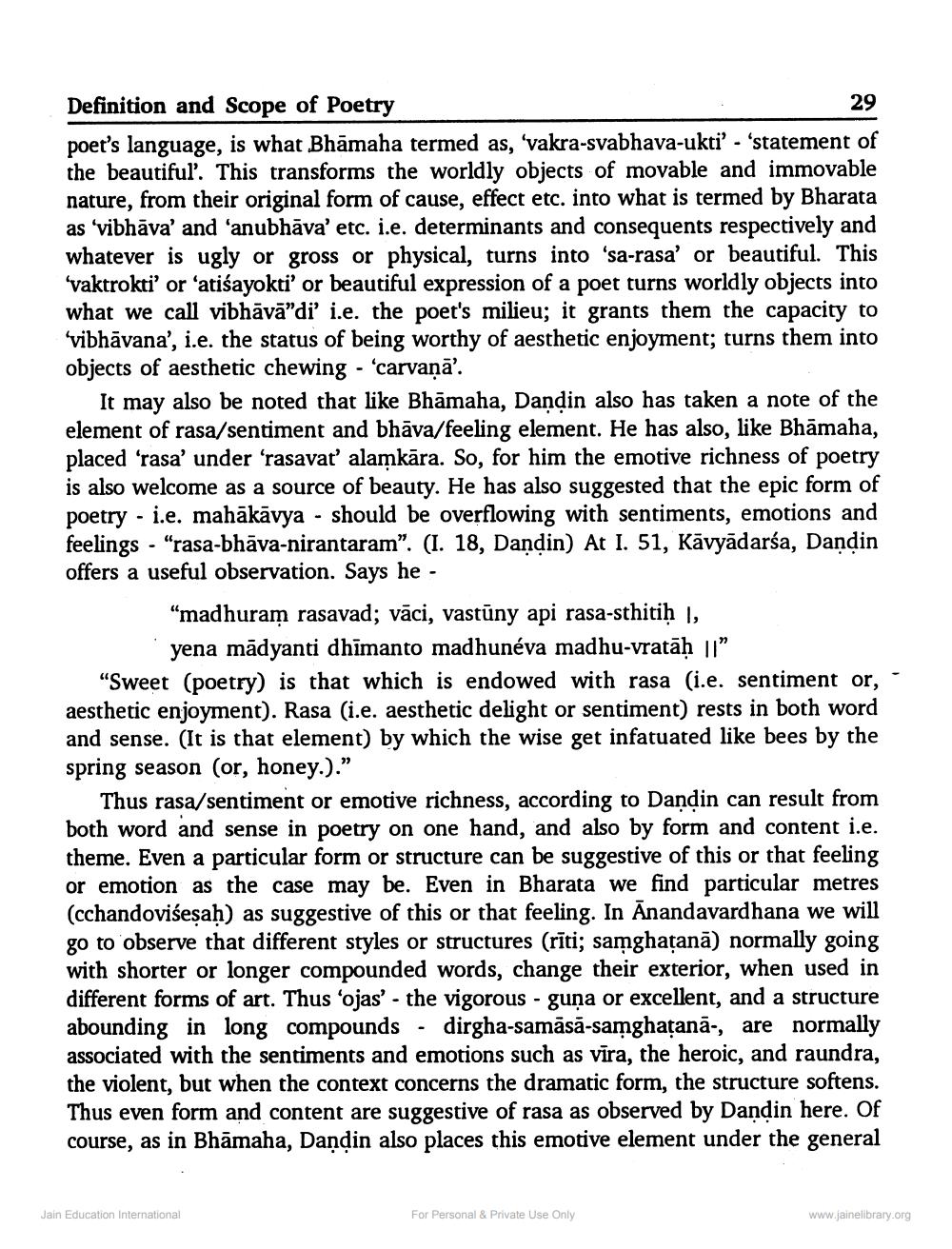________________
Definition and Scope of Poetry
29 poet's language, is what Bhāmaha termed as, 'vakra-svabhava-ukti' - 'statement of the beautiful. This transforms the worldly objects of movable and immovable nature, from their original form of cause, effect etc. into what is termed by Bharata as 'vibhāva' and 'anubhāva' etc. i.e. determinants and consequents respectively and whatever is ugly or gross or physical, turns into 'sa-rasa' or beautiful. This 'vaktrokti' or 'atiśayokti' or beautiful expression of a poet turns worldly objects into what we call vibhāvā"di' i.e. the poet's milieu; it grants them the capacity to 'vibhāvana', i.e. the status of being worthy of aesthetic enjoyment; turns them into objects of aesthetic chewing - 'carvaņā'.
It may also be noted that like Bhāmaha, Dandin also has taken a note of the element of rasa/sentiment and bhāva/feeling element. He has also, like Bhāmaha, placed 'rasa' under 'rasavat alamkāra. So, for him the emotive richness of poetry is also welcome as a source of beauty. He has also suggested that the epic form of poetry - i.e. mahākāvya - should be overflowing with sentiments, emotions and feelings - "rasa-bhāva-nirantaram”. (I. 18, Dandin) At I. 51, Kävyādarśa, Dandin offers a useful observation. Says he -
"madhuram rasavad; vāci, vastūny api rasa-sthitiḥ ,
yena mādyanti dhīmanto madhunéva madhu-vratāḥ 11" “Sweet (poetry) is that which is endowed with rasa (i.e. sentiment or,aesthetic enjoyment). Rasa (i.e. aesthetic delight or sentiment) rests in both word and sense. (It is that element) by which the wise get infatuated like bees by the spring season (or, honey.).”
Thus rasa/sentiment or emotive richness, according to Dandin can result from both word and sense in poetry on one hand, and also by form and content i.e. theme. Even a particular form or structure can be suggestive of this or that feeling or emotion as the case may be. Even in Bharata we find particular metres (cchandovišesah) as suggestive of this or that feeling. In Anandavardhana we will go to observe that different styles or structures (rīti; samghațanā) normally going with shorter or longer compounded words, change their exterior, when used in different forms of art. Thus ‘ojas' - the vigorous - guņa or excellent, and a structure abounding in long compounds - dirgha-samāsā-samghatanā., are normally associated with the sentiments and emotions such as vīra, the heroic, and raundra, the violent, but when the context concerns the dramatic form, the structure softens. Thus even form and content are suggestive of rasa as observed by Dandin here. Of course, as in Bhāmaha, Dandin also places this emotive element under the general
Jain Education International
For Personal & Private Use Only
www.jainelibrary.org




